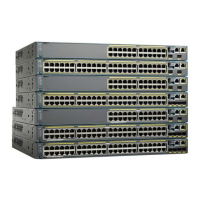A Disconnect-Request failure following command re-sending could be the result of either a successful
session termination before change-over (if the Disconnect-ACK was not sent) or a session termination by
other means (for example, a link failure) that occurred after the original command was issued and before
the standby switch became active.
Note
Related Topics
Session Identification, on page 64
CoA Request: Bounce-Port
A RADIUS server CoA bounce port sent from a RADIUS server can cause a link flap on an authentication
port, which triggers DHCP renegotiation from one or more hosts connected to this port. This incident can
occur when there is a VLAN change and the endpoint is a device (such as a printer) that does not have a
mechanism to detect a change on this authentication port. The CoA bounce port is carried in a standard
CoA-Request message that contains the following VSA:
Cisco:Avpair="subscriber:command=bounce-host-port"
Because this command is session-oriented, it must be accompanied by one or more of the session identification
attributes. If the session cannot be located, the switch returns a CoA-NAK message with the “Session Context
Not Found” error-code attribute. If the session is located, the switch disables the hosting port for a period of
10 seconds, re-enables it (port-bounce), and returns a CoA-ACK.
If the switch fails before returning a CoA-ACK to the client, the process is repeated on the new active switch
when the request is re-sent from the client. If the switch fails after returning a CoA-ACK message to the client
but before the operation has completed, the operation is re-started on the new active switch.
Related Topics
Session Identification, on page 64
Stacking Guidelines for Session Termination
No special handling is required for CoA Disconnect-Request messages in a switch stack.
Stacking Guidelines for CoA-Request Bounce-Port
Because the bounce-port command is targeted at a session, not a port, if the session is not found, the command
cannot be executed.
When the Auth Manager command handler on the stack master receives a valid bounce-port command, it
checkpoints the following information before returning a CoA-ACK message:
•
the need for a port-bounce
•
the port-id (found in the local session context)
The switch initiates a port-bounce (disables the port for 10 seconds, then re-enables it).
If the port-bounce is successful, the signal that triggered the port-bounce is removed from the standby stack
master.
Catalyst 2960-X Switch Security Configuration Guide, Cisco IOS Release 15.0(2)EX
68 OL-29048-01
Configuring RADIUS
RADIUS Change of Authorization
